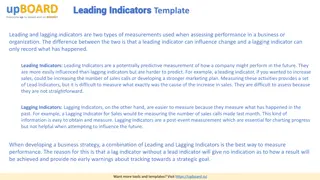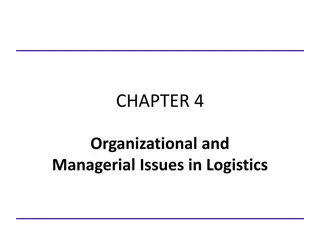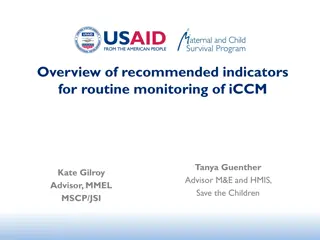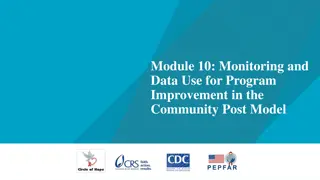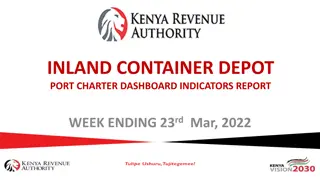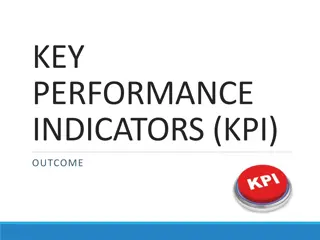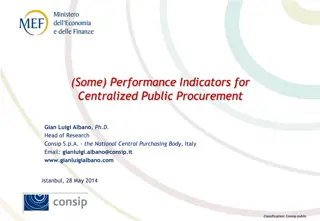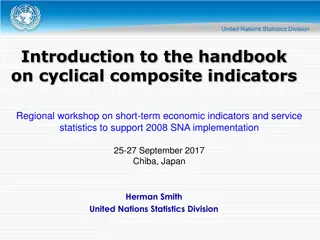
Neal Elbaum Shares Key Performance Indicators for Monitoring Logistics Efficiency
In the fast-paced world of logistics, efficiency is paramount. Companies rely on key performance indicators (KPIs) to ensure that operations run smoothly and effectively. A logistics expert, Neal Elbaum shares valuable insights into the KPIs crucial
Download Presentation

Please find below an Image/Link to download the presentation.
The content on the website is provided AS IS for your information and personal use only. It may not be sold, licensed, or shared on other websites without obtaining consent from the author. Download presentation by click this link. If you encounter any issues during the download, it is possible that the publisher has removed the file from their server.
E N D
Presentation Transcript
Neal Elbaum Shares Key Performance Indicators for Monitoring Logistics Efficiency In the fast-paced world of logistics, efficiency is paramount. Companies rely on key performance indicators (KPIs) to ensure that operations run smoothly and effectively. A logistics expert, Neal Elbaum shares valuable insights into the KPIs crucial for monitoring and improving logistics efficiency. These indicators help businesses identify areas of improvement, streamline operations, and ultimately enhance customer satisfaction. What Are Key Performance Indicators (KPIs)? Key Performance Indicators (KPIs) are measurable values that demonstrate how effectively a company achieves key business objectives. In logistics, KPIs provide insight into various aspects of the supply chain, from procurement to delivery. Monitoring these indicators allows logistics managers to make data-driven decisions, optimize processes, and reduce costs. Essential KPIs for Logistics Efficiency Neal Elbaum emphasizes the importance of tracking the right KPIs to ensure logistics efficiency. Here are some of the most critical ones: 1. Order Accuracy Order accuracy measures the percentage of orders delivered correctly without errors. High order accuracy is crucial for customer satisfaction and minimizing returns and complaints. How to Measure: Total accurate orders / Total orders x 100 2. On-Time Delivery (OTD) On-time delivery is the percentage of orders delivered within the agreed timeframe. This KPI reflects the reliability of the logistics process and is vital for maintaining customer trust. How to Measure: Orders delivered on time / Total orders x 100 3. Transportation Costs Transportation costs include all expenses related to the movement of goods from one location to another. Keeping these costs under control is essential for profitability. How to Measure:
Total transportation costs / Total orders 4. Inventory Turnover Inventory turnover indicates how often inventory is sold and replaced over a specific period. High inventory turnover rates suggest efficient inventory management and demand forecasting. How to Measure: Cost of goods sold / Average inventory 5. Warehouse Productivity Warehouse productivity measures the efficiency of warehouse operations, including picking, packing, and shipping activities. Improving warehouse productivity can significantly impact overall logistics efficiency. How to Measure: Total output / Total hours worked 6. Order Cycle Time Order cycle time is the average time taken to complete an order from receipt to delivery. Shorter cycle times indicate a more efficient logistics process. How to Measure: Total order processing time / Total orders 7. Return Rate Return rate measures the percentage of orders returned by customers. A high return rate can indicate issues with product quality, packaging, or order accuracy. How to Measure: Total returns / Total orders x 100 8. Damage Rate The damage rate tracks the percentage of products damaged during the logistics process. Reducing the damage rate can lead to cost savings and improved customer satisfaction. How to Measure: Total damaged items / Total shipped items x 100
Implementing and Monitoring KPIs To effectively monitor these KPIs, logistics managers should use a robust tracking system that collects and analyzes data in real time. Implementing technology solutions like Transportation Management Systems (TMS) and Warehouse Management Systems (WMS) can provide valuable insights and automate the data collection process. Regularly reviewing KPI reports helps identify trends, pinpoint inefficiencies, and implement corrective actions. Neal Elbaum suggests conducting weekly or monthly KPI reviews to stay on top of performance and make necessary adjustments promptly. Conclusion Monitoring logistics efficiency through KPIs is essential for maintaining a competitive edge in the industry. By focusing on critical indicators such as order accuracy, on-time delivery, transportation costs, inventory turnover, warehouse productivity, order cycle time, return rate, and damage rate, businesses can optimize their logistics operations. Neal Elbaum's insights highlight the importance of these KPIs in achieving operational excellence and delivering superior customer service. By integrating these KPIs into their logistics strategy, companies can ensure continuous improvement, cost reduction, and enhanced customer satisfaction. Regularly tracking and analyzing these metrics allows businesses to stay agile and responsive in an ever-evolving market landscape.

